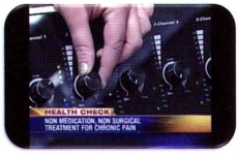Treatment Plan: Do Nothing
Treatment Plan: Do Nothing?
It’s cold and flu season again and we all do the best we can to stay well and avoid catching an all-too-contagious virus. We each have our own go-to plans of how to fight it: vitamin C, zinc or elderberry supplements, gargling with salt water, staying warm, rest and binge-watching Netflix shows. My grandmother swore by anise candy that she made from scratch, while my father prefers a hot toddy to remedy a cold. Washing hands is still the number one way to avoid illness — along with avoiding contact with your face, and keeping your immune system strong.
Far too many of us have also taken antibiotics despite the fact that they do nothing for a virus and their overuse has now created resistant strains of bacteria for all humans (Ventola, 2015). You may be tempted to go to the doctor for antibiotics “just in case,” and then the antibiotics are falsely credited for your recovery since you always do eventually recover. Primary care physician and medical director at Chapa-De Indian Health, Dr. Mike Mulligan, says in reference to antibiotics, “If I do nothing I will be doing right by patients most of the time compared to if I prescribe something. If I prescribed antibiotics for everyone who wanted them, I would most often be doing wrong.”
Typically when we go to the doctor we expect someone to do something, yet overtreatment is far more common than under-treatment and the impact causes real harm. Dr. H. Gilbert Welch has investigated how and why this happens for many health problems including heart conditions, headaches, back pain, knee and hip joints, gastrointestinal disorders, and even cancer. In his book Less Medicine, More Health (2015), he examines how early detection hasn’t led to saved or improved lives, which defies logic at first glance. The over-prescription of medications alone is nothing short of epidemic, most glaringly seen with the overuse of opioid pain medications.
Chronic pain is that much more frustrating because of its long duration and frequently leaves people feeling Something More Should Be Done. It seems like Something Else Must Be Wrong if only the doctor could find it. Each specialty department shakes their heads and gives the “good news” of normal or inconclusive scans. Navigating health care systems is not easy to begin with and there are still far too few comprehensive pain management programs that focus on functional rehabilitation. Once in a while the ragged pursuit of Something Else can lead to a more thorough workup or referral to a good treatment program. It depends where the Doing More is directed. Too often, the quest for the Something Else leads to tests and treatments that carry their own risks without relief; often frustrating and distracting to the patient and doctor, resulting in more pain, medical appointment exhaustion, and patients feeling demoralized and hopeless.
Chronic pain has few circumstances where invasive procedures are the best choice. Usually if surgery is warranted it becomes quite clear early on and a 2nd or 3rd opinion will render the same conclusion. The risk of more pain is high with surgery when done because “it might help,” even if the structure has been “fixed.” To a surgeon, fixed means correcting the abnormality. To you as a patient, fixed likely means less pain and improved function. The past 30 years has revealed that abnormal scans of the lumbar spine are common among pain-free individuals and normal scans are common among those who experience pain (Jensen, et al., 1994; Borenstein, et al, 2001). So if the abnormal is normal and abnormal findings do not predict pain, what do we do now?
Last week my daughter’s knee swelled up larger than a softball until she could no longer bend it. We had an x-ray and waited. And waited. The swollen mass grew bigger and her doctor reassured us that ice, elevation and anti-inflammatories were the best treatment. This was hard for me to believe and my mind raced: What caused it? There must be a reason! Why is it so large? Can’t we test the fluid? Can’t we do something to make it go away quickly? I felt like I was Doing Nothing and this felt terrible, but her doctor had ruled-out life and limb-threatening infection and it was the right call. Had I gone to the emergency room, the fluid may have been tapped, risking infection, leading to antibiotics, potential complications and unwanted effects, including more time in bed. An MRI may have revealed an abnormality that was unrelated, which could have led to Doing Too Much. My worst fears were not realized, but it was tempting to buy into the fear that Doing Nothing would lead to a bad result that could have been avoided if I had Done More. What felt like Doing Nothing really was doing something – something at home (elevation, ice, anti-inflammatories, and coping with fear and pain) and Nothing More at the hospital.
The Temptation
It is tempting to assume:
- If there is pain, something is wrong.
- If something is wrong, it can and should be found if we look hard enough.
- Once it is found, it can be fixed.
- If it is fixed, I will feel better.
These assumptions are myths that have been dispelled over time. Sometimes we hurt without any abnormal findings. Sometimes looking harder leads to more problems rather than fixes. Even if the source of pain is found, it may be best to avoid invasive treatments. And the fixing of found abnormalities helps — if you are a car (but even then be cautious of overtreatment!).
But isn’t the pursuit worth the risks? Welch’s data suggests not. One common example is a CT scan – the radiation may increase cancer risk and should be avoided whenever possible. But there also are lesser known risks he calls “incidentalomas” – those incidental findings that appear abnormal on a scan, but do not actually explain or contribute to the symptoms you are experiencing. These red herrings lead to many unnecessary procedures including what I call health-ectomies, or removal of healthy organs in the hopes that it will solve the problem. This is very common in abdominal pain, one of the leading causes of emergency room visits (CDC, 2011). In our highly medicalized society that relies on technology to save us, we can be misled to think that everything can and should be found on a scan or test. However, the search may only distract you from good self-care in the pursuit of an outside fix. Living in the information age leads us to think that more information is better, but more is not always better. “Better information is better,” Welch says (2015). We need useful information to move forward with clarity in medical decisions and health. “At least I would know” does not work if it distracts you from the truth. The truth may be that your disks are degenerating, but it is not typically the cause of your discomfort.
The Frustration
It’s frustrating to be told no, you don’t need that test, that the cause of your suffering is unknown, or that there is no cure. “That’s all I can do,” are not words we like to hear. They rank up there with “Could it be depression?” Your doctor may or may not have explained to you why more tests are not recommended. Some people suspect it’s to save money, but most clinics have financial incentives to perform more tests, not fewer. You as the patient may feel more taken care of, more thoroughly examined, but it may not lead at all to better care. Sometimes it is best to Do Nothing, at least nothing at the doctor’s office.
The Fear of Missing Something
The Fear of Missing Something is real and powerful. Any doctor can tell you how terrible it feels when something has been missed. It haunts them for a lifetime. This is a fear of patient and doctor alike, although it is overtreatment that is the common daily occurrence. Most of us feel better Doing Something. Mistakes are made when we are guided by fear rather than facts. We depend on doctors to rule-out anything life-threatening. Afterwards, it can feel devastating when it’s suggested that you “learn to live with it.” But this is not because doctors don’t care enough to do more. Most health care providers really do care, and they care enough to do less. This is where their job ends and yours continues.
Chronic pain is often part of a feedback loop with the central nervous system that becomes sensitized even when the pain signal from body to brain carries no new or useful information about the condition of the body. Inflammation and degeneration are common pain-related issues best treated by lifestyle improvements. A spinal fusion may “fix” the current instability, but create more instability in surrounding areas. It may “fix” the problem, but also severely decrease range of motion. Medication almost always has unwanted effects. Injections have risk and the benefits must outweigh the risks for it to be a good choice for you. Physical therapy may hurt and you swore you would never go back, but finding a physical therapist who specializes in chronic pain is a key part of rehabilitation. Dr. Nobert Boos and colleagues (2000) found that the physical and psychological aspects of a person’s job predicted pain over a 5-year period better than MRI results. If the chronic stress of a tyrant boss or conflict-filled relationships are fueling inflammation in your body, you might consider treatment that targets these root causes of inflammation rather than pursuing a traditional medical fix targeting the wear and tear that’s found on MRI.
Often the body does best when it’s left to its own devices rather than modern medicine interfering at all. You may feel like More Should Be Done, but for chronic and stable conditions or the common cold and flu, wellness is best found at home, not at the doctor. Self-care is a full time job and the goal is to get so good at it, less effort is required over time.

If you would like to discuss what Carolina Pain Scrambler do to help relieve your chronic pain symptoms or receive more information on our treatment process, please do not hesitate to call us at 864-520-5011 or you can email us at info@carolinapainscrambler.com








 Pain Scrambler MC-5A Scrambler Treatment is innovative pain treatment method especially for incurable chronicle pain treatment, besides neural pain and chronicle pain. is invented. Generally it applies to patients who are either dumb to all formal pain treatment and medicine treatment or careful of side effect of medicine, has no side effects, and can be expected to direct effective treatment effect.
Pain Scrambler MC-5A Scrambler Treatment is innovative pain treatment method especially for incurable chronicle pain treatment, besides neural pain and chronicle pain. is invented. Generally it applies to patients who are either dumb to all formal pain treatment and medicine treatment or careful of side effect of medicine, has no side effects, and can be expected to direct effective treatment effect.
 WSA UTAH State TV KSL-TV 5 News(2011.03.16)
WSA UTAH State TV KSL-TV 5 News(2011.03.16) NBC-TV 10 News USA Rhode Island State TV(2012.03.13)
NBC-TV 10 News USA Rhode Island State TV(2012.03.13) SBS News – TV
SBS News – TV


